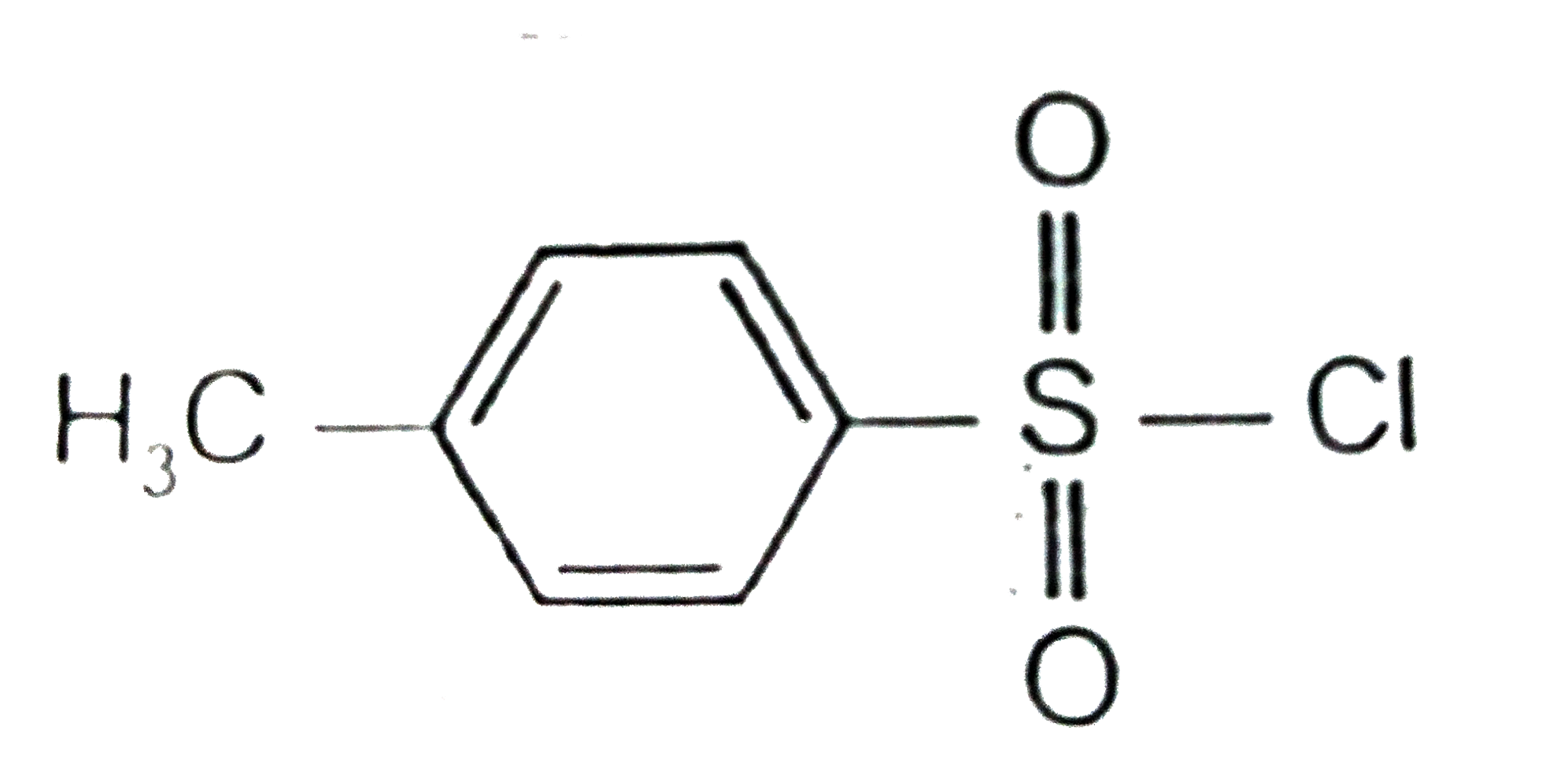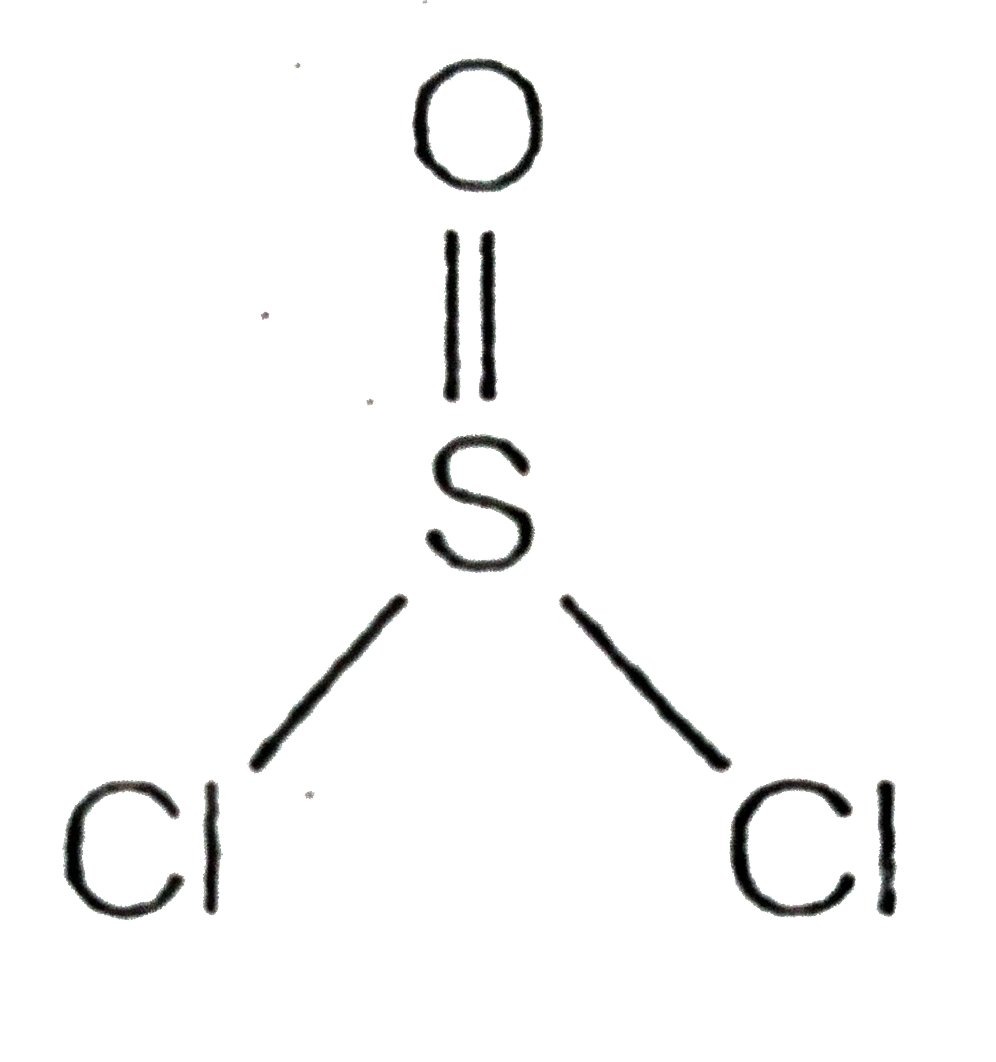Which of the following convert a primary hydroxyl group into good leaving group for a SN2 reaction ?


PCl5
Nal (5 molar solution )
The correct Answer is:A, B, C
To convert a primary hydroxyl group into a good leaving group for an SN2 reaction, we need to consider various reagents that can facilitate this transformation. Here’s a step-by-step solution to identify which reagents can achieve this:
Step 1: Understand the Primary Hydroxyl Group
A primary hydroxyl group (–OH) is present in primary alcohols. In order to participate in an SN2 reaction, the hydroxyl group must be converted into a better leaving group, such as a halide ion (Cl⁻, Br⁻, or I⁻).
Hint: Recall that a good leaving group is typically a stable ion or molecule that can depart easily during a reaction.
Step 2: Analyze the Given Reagents
We will examine each of the given reagents to see if they can convert the primary hydroxyl group into a good leaving group.
1. Reagent A: HCl (Hydrochloric Acid)
- When HCl reacts with a primary alcohol, it protonates the hydroxyl group, converting it into water (H₂O), which is a good leaving group.
- The reaction can be represented as:
RCH2OH+HCl→RCH2Cl+H2O
- Conclusion: This reagent is effective in converting the hydroxyl group into a good leaving group.
Hint: Consider how protonation of the hydroxyl group affects its ability to leave.
2. Reagent B: SOCl₂ (Thionyl Chloride)
- SOCl₂ reacts with primary alcohols to convert the hydroxyl group into a chloride. The reaction involves the formation of an intermediate that eventually leads to the release of HCl and the formation of a good leaving group.
- The reaction can be represented as:
RCH2OH+SOCl2→RCH2Cl+SO2+HCl
- Conclusion: This reagent also effectively converts the hydroxyl group into a good leaving group.
Hint: Look for reagents that can replace the hydroxyl group with a halide.
3. Reagent C: PCl₅ (Phosphorus Pentachloride)
- PCl₅ can convert the hydroxyl group into a chloride by replacing the –OH group with a –Cl group, forming a good leaving group.
- The reaction can be represented as:
RCH2OH+PCl5→RCH2Cl+POCl3+HCl
- Conclusion: This reagent is also effective in converting the hydroxyl group into a good leaving group.
Hint: Consider the role of phosphorus compounds in halogenation reactions.
4. Reagent D: NaI (Sodium Iodide)
- Sodium iodide reacts with primary alcohols but does not convert the hydroxyl group into a good leaving group. Instead, it forms an alkoxide (–O⁻Na⁺), which is not a good leaving group in SN2 reactions.
- The reaction can be represented as:
RCH2OH+NaI→RCH2O−Na++HI
- Conclusion: This reagent does not effectively convert the hydroxyl group into a good leaving group.
Hint: Consider whether the product formed is a stable leaving group or not.
Final Answer
The reagents that convert a primary hydroxyl group into a good leaving group for an SN2 reaction are:
- A (HCl)
- B (SOCl₂)
- C (PCl₅)
The correct options are A, B, and C.
A primary hydroxyl group (–OH) is present in primary alcohols. In order to participate in an SN2 reaction, the hydroxyl group must be converted into a better leaving group, such as a halide ion (Cl⁻, Br⁻, or I⁻).
We will examine each of the given reagents to see if they can convert the primary hydroxyl group into a good leaving group.
- When HCl reacts with a primary alcohol, it protonates the hydroxyl group, converting it into water (H₂O), which is a good leaving group.
- The reaction can be represented as:
RCH2OH+HCl→RCH2Cl+H2O
- Conclusion: This reagent is effective in converting the hydroxyl group into a good leaving group.
- SOCl₂ reacts with primary alcohols to convert the hydroxyl group into a chloride. The reaction involves the formation of an intermediate that eventually leads to the release of HCl and the formation of a good leaving group.
- The reaction can be represented as:
RCH2OH+SOCl2→RCH2Cl+SO2+HCl
- Conclusion: This reagent also effectively converts the hydroxyl group into a good leaving group.
- PCl₅ can convert the hydroxyl group into a chloride by replacing the –OH group with a –Cl group, forming a good leaving group.
- The reaction can be represented as:
RCH2OH+PCl5→RCH2Cl+POCl3+HCl
- Conclusion: This reagent is also effective in converting the hydroxyl group into a good leaving group.
- Sodium iodide reacts with primary alcohols but does not convert the hydroxyl group into a good leaving group. Instead, it forms an alkoxide (–O⁻Na⁺), which is not a good leaving group in SN2 reactions.
- The reaction can be represented as:
RCH2OH+NaI→RCH2O−Na++HI
- Conclusion: This reagent does not effectively convert the hydroxyl group into a good leaving group.
The reagents that convert a primary hydroxyl group into a good leaving group for an SN2 reaction are:
- A (HCl)
- B (SOCl₂)
- C (PCl₅)
Similar Questions
Knowledge Check
Which of the following is not the correct grouping?
AEctoderm-Retina, epidermis and nervous systemBMesoderm-Ovary, urinary bladder and kidneysCMesoderm-kidneys, connective tissue and testisDEndoderm-Thyroid, pineal and thymus.Which of the following are SN2 reactions?
A B
B C
C D
D
Which of the following are deactivating group
ACF3−O||S||O−O−BCH3−O−O||P∣OCH3−O−CCF3DCH3−O||C−CH2−O−
In the following SN2 reaction
_S01_421_Q01.png)
View SolutionWhich of the following statements are true for group 2 elements?
View SolutionIn which of the following species containing both nucleophile and leaving group, intramolecular SN reaction occurs ?
View SolutionWhich of the following group (s) is/are m-directing ?
View SolutionWhich of the following are better leaving group than

View Solution

_S01_496_Q01.png)